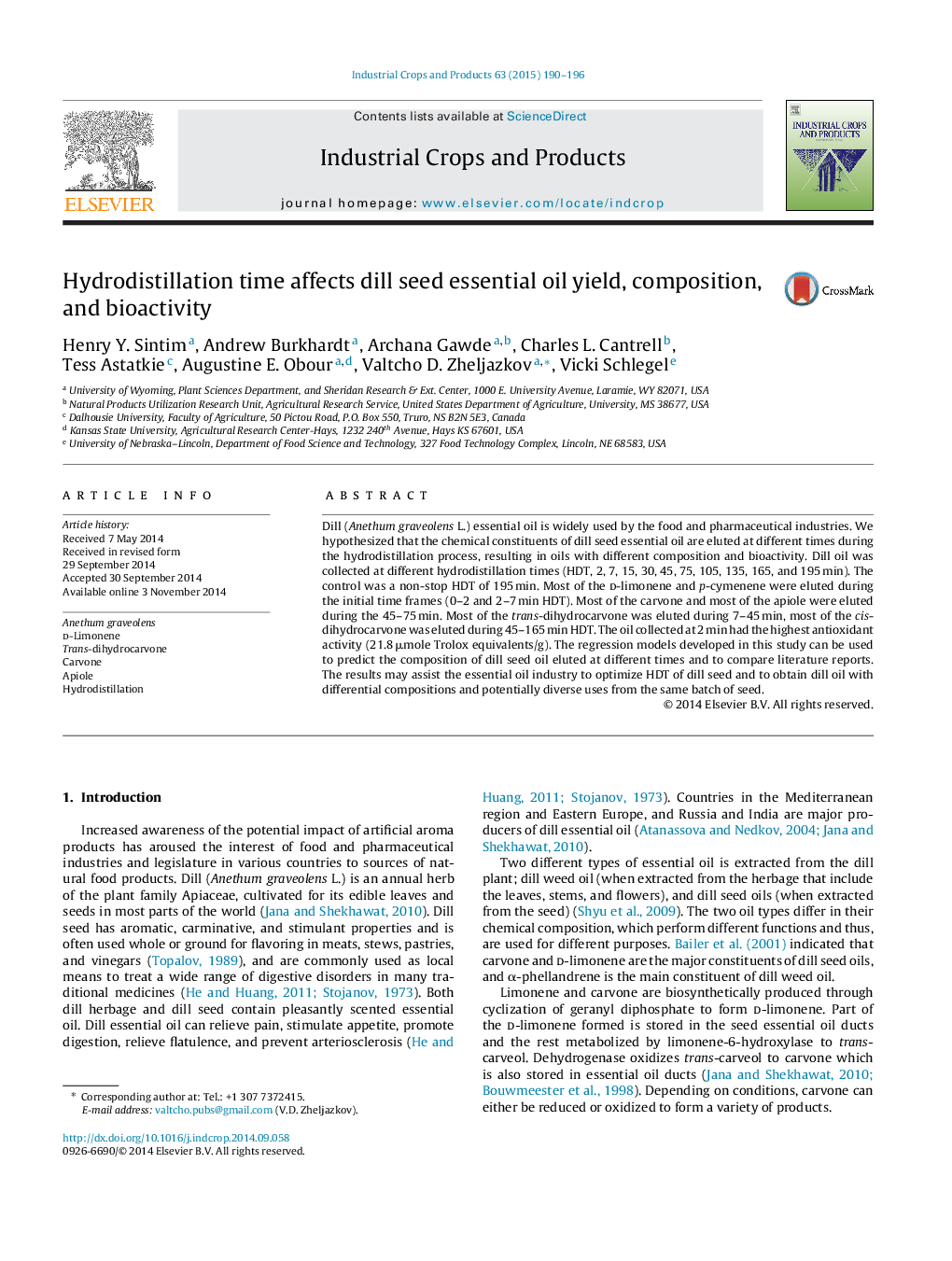| Article ID | Journal | Published Year | Pages | File Type |
|---|---|---|---|---|
| 4513259 | Industrial Crops and Products | 2015 | 7 Pages |
•Dill is one of the most widely spread spice and essential oil crop in the world.•Dill antioxidant activity was affected by hydrodistillation time (HDT).•HDT can be used to customize dill seed oil yield and composition.•The regression models developed in this study can predict essential oil profile.•The regression models can be used to compare reports on dill oil composition.
Dill (Anethum graveolens L.) essential oil is widely used by the food and pharmaceutical industries. We hypothesized that the chemical constituents of dill seed essential oil are eluted at different times during the hydrodistillation process, resulting in oils with different composition and bioactivity. Dill oil was collected at different hydrodistillation times (HDT, 2, 7, 15, 30, 45, 75, 105, 135, 165, and 195 min). The control was a non-stop HDT of 195 min. Most of the d-limonene and p-cymenene were eluted during the initial time frames (0–2 and 2–7 min HDT). Most of the carvone and most of the apiole were eluted during the 45–75 min. Most of the trans-dihydrocarvone was eluted during 7–45 min, most of the cis-dihydrocarvone was eluted during 45–165 min HDT. The oil collected at 2 min had the highest antioxidant activity (21.8 μmole Trolox equivalents/g). The regression models developed in this study can be used to predict the composition of dill seed oil eluted at different times and to compare literature reports. The results may assist the essential oil industry to optimize HDT of dill seed and to obtain dill oil with differential compositions and potentially diverse uses from the same batch of seed.
